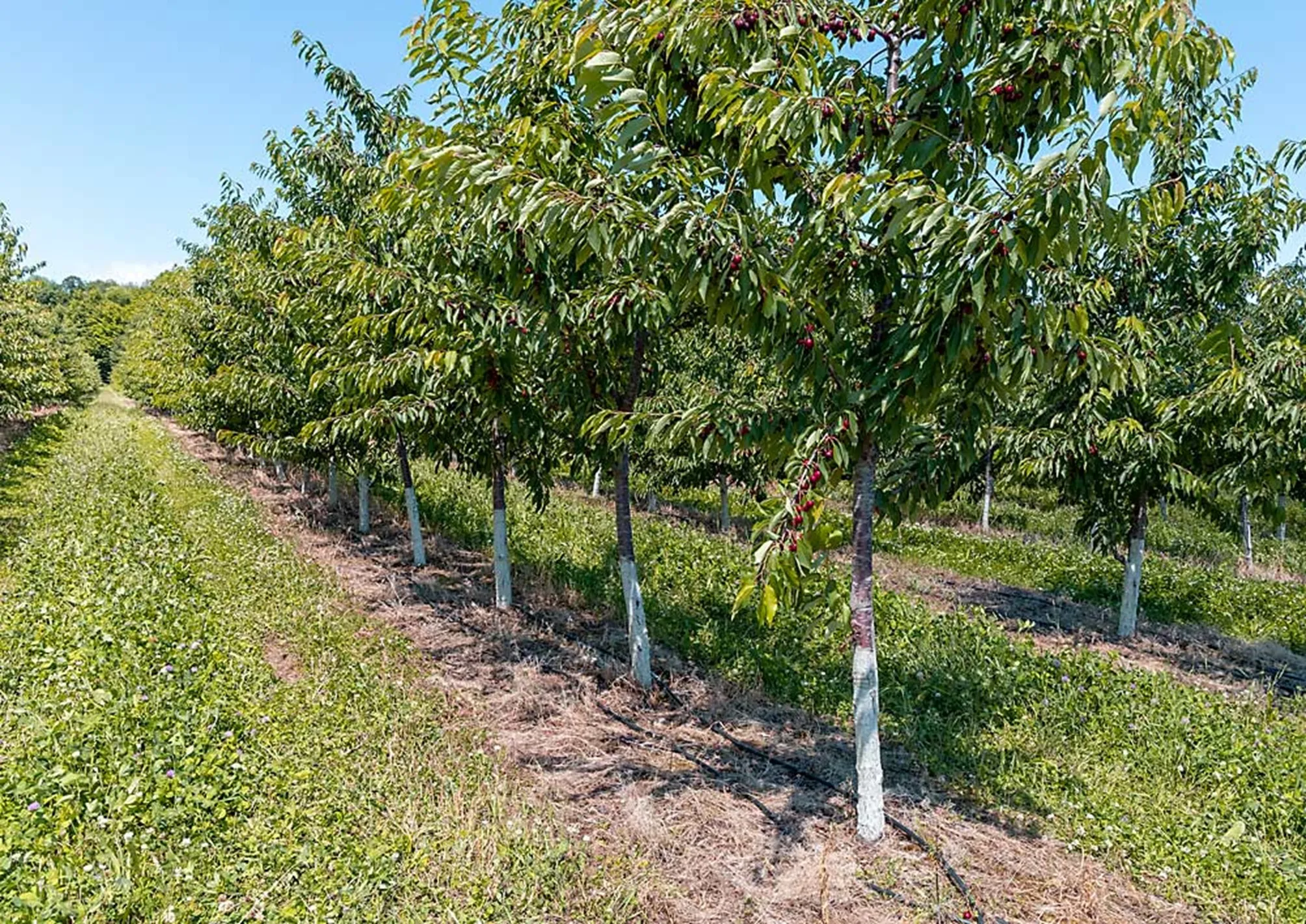Sweet cherries are highly appreciated by consumers for their excellent sensory, visual, and nutritional qualities.
However, these fruits are extremely susceptible to postharvest deterioration, which leads to a progressive decline in quality and significantly limits their commercial shelf life.
A recent study from China has, for the first time, evaluated the effectiveness of a combined treatment based on hydrocooling (HC) and a thyme essential oil (TEO) emulsion to enhance the postharvest preservation of sweet cherries.
The fruits used in the study were harvested from an orchard cultivar “Tieton”, located in Shandong Province, China.
Combined treatment effectiveness
The results showed that the combined use of hydrocooling and thyme essential oil significantly reduced the incidence of fruit rot and stem browning index compared to hydrocooling alone, while maintaining greater pulp firmness and higher levels of anthocyanins, total soluble solids, and titratable acidity in the fruits.
The combination also enhanced the activity of defense-related enzymes and positively influenced the fungal community on the fruit surface by reducing the presence of phytopathogenic fungi such as Alternaria, Botrytis, and Cladosporium.
This approach extended the cherries' shelf life to up to 12 days, compared to 9 days with hydrocooling alone and about 6 days in untreated controls.
The use of thyme essential oil, known for its content of thymol and carvacrol with antifungal and antioxidant properties, allowed effective control of some postharvest diseases.
Moreover, the combined action of the two treatments preserved the structure of the fruit cuticle and stomatal openings, slowing water loss and respiration, key factors in delaying senescence.
The treatment also stimulated the production of secondary metabolites and the synthesis of phenolic compounds, reinforcing natural barriers against fungal infections.
Organoleptic and microbiological benefits
In addition to reducing pathogen incidence, the combined treatment helped maintain skin brightness and color, pulp firmness, and overall organoleptic quality, without negatively affecting flavor or aroma.
This was achieved thanks to the use of low concentrations of thyme essential oil that did not alter the sensory properties of the fruit (confirmed by sensory panel testing).
From a microbiological perspective, the combined application of HC and TEO modified the structure and diversity of the fungal community, reducing the number of pathogenic species on the fruit surface and promoting the presence of non-pathogenic microorganisms, such as Aureobasidium, which may indirectly help suppress harmful fungi.
This selective effect, combined with the ability to limit cellular membrane oxidation, demonstrated the treatment’s effective protective action against fruit spoilage and degradation.
Conclusion and implications
In conclusion, the combined approach of hydrocooling and thyme essential oil represents a promising and sustainable strategy to reduce postharvest losses and extend sweet cherries shelf life.
This improvement is mainly attributed to the synergistic effect of HC and TEO in modulating the diversity, composition, and structure of the fungal community, as well as in suppressing the populations of major pathogenic fungi present on the fruit surface.
Source: Chu, F., Jiang, Y., Zhai, H., Zhang, J., & Wang, D. (2025). Combination of hydrocooling and thyme essential oil emulsion: Controls postharvest spoilage, maintains quality, and extends shelf-life of sweet cherry. Food Control, 175, 111306. https://doi.org/10.1016/j.foodcont.2025.111306
Image source: SL Fruit Service
Andrea Giovannini
University of Bologna (ITA)
Cherry Times - All rights reserved












